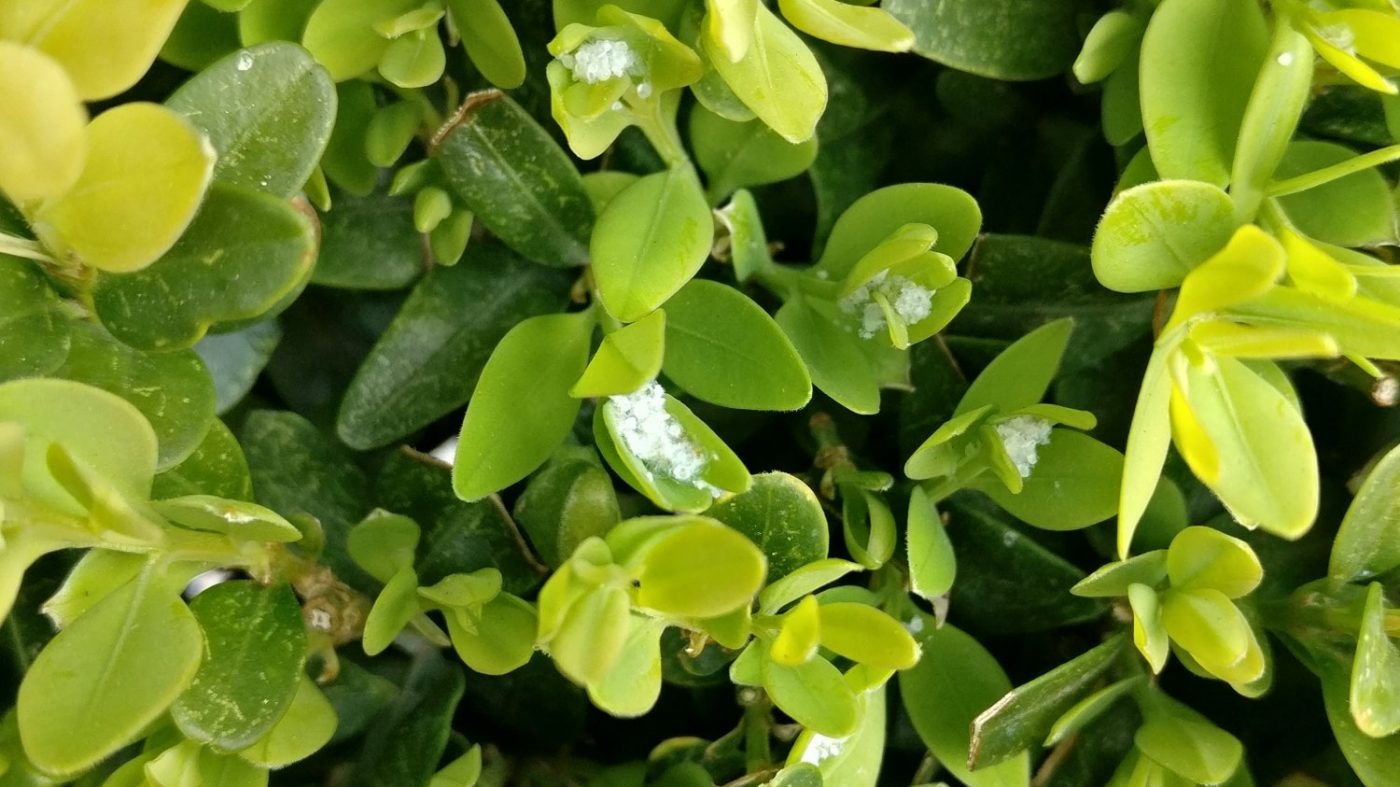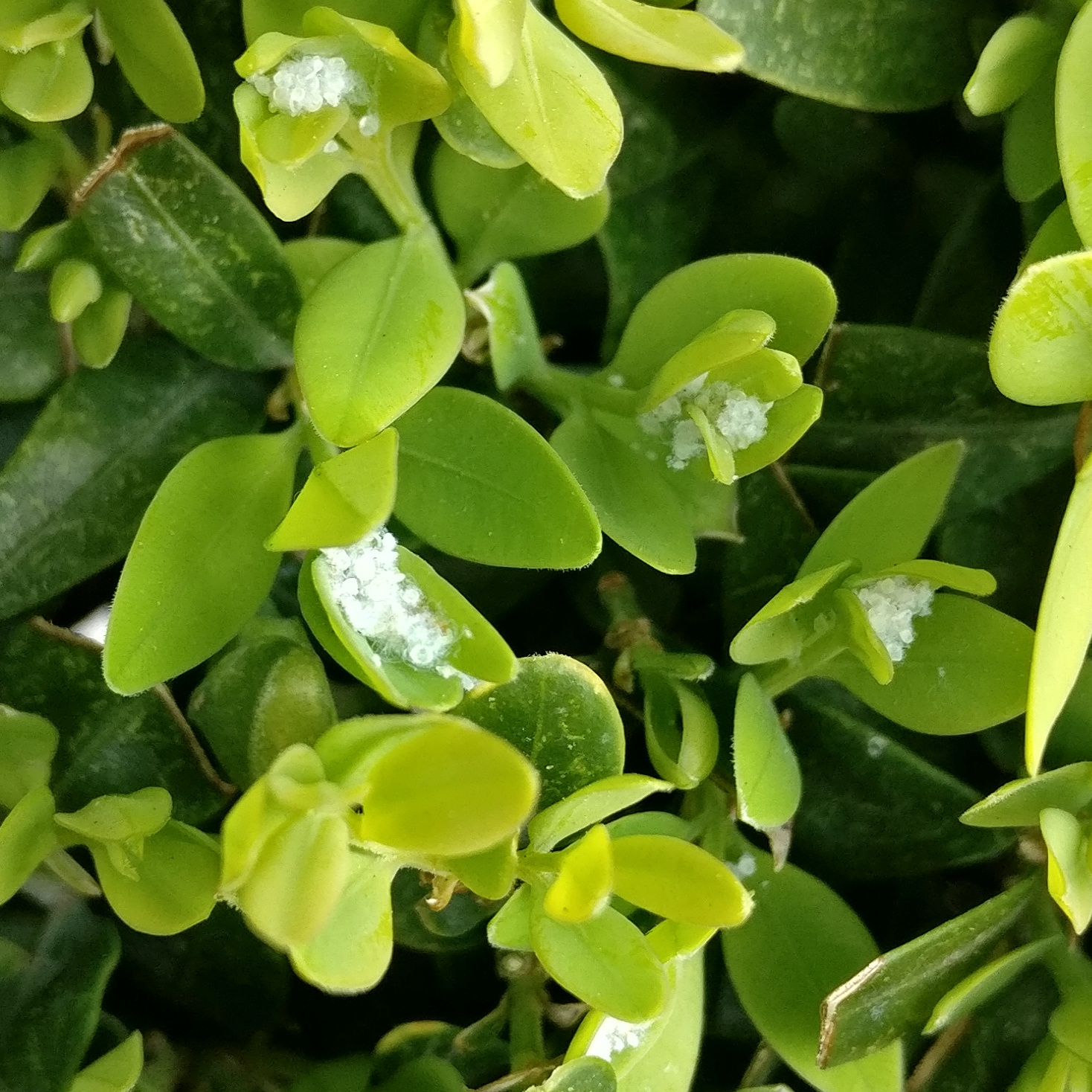Watch out for Boxwood psyllid – UPDATE
The nymphs of Boxwood psyllid (Psylla buxi) are active about now, sucking on the sap from the base of new leaves, causing cupping of the leaves making them look like small ‘Brussels sprouts’. They leave white flecks or a profuse white powder which can be seen in the leaf tips and when the bush is agitated.
Psyllid damage is mainly aesthetic so light infestations will produce only scattered leaf cupping, but this can build up over time.
Treat by spraying with insecticidal soap or summer horticultural oil in spring or carefully with a chemical insecticide.
The major natural insect predators in order of importance based on their abundance are anthocorid hugs (Anthocoris nemorum), ladybird beetles (Propylea 14-punctata, and Adalia bipunctata), the European earwig (Forficula auricularia) and the green lacewing (Chrysoperla carnea).
Update May 2020
Jonathan Poolman contacted EBTS after reading this story and the Topiarius article.
He says
My wife was trimming our (small) hedge and found evidence of a pest that we identified from your site as psyllids. We live in north-east Scotland (Elgin), so it would appear that the pest has spread beyond southern England and South Wales as shown in the linked paper on the Diseases and pests section of your site.
So it seems the warming climate has allowed the box pysllids to spread further across the country, a phenomenon that is likely to become the story for more insects and pests over the coming year and something we will all have to watch out for and react accordingly.
Washing Up the Pysllids
On a more positive note, the Chairman tried spraying a mixture of water and some washing up liquid on his plants when the fluffy white deposit appeared. Although a couple of repeat sprays were required, he hasn’t seen any curling leaves on the new growth, so it seems like it has worked. The theory is that the washing up liquid reduces the surface tension of the water and this drowns the pysllids. The only problem with this is that as washing up liquid isn’t registered as a treatment for Psyllid’s, officially it can’t be used.
Originally published April 12, 2020




